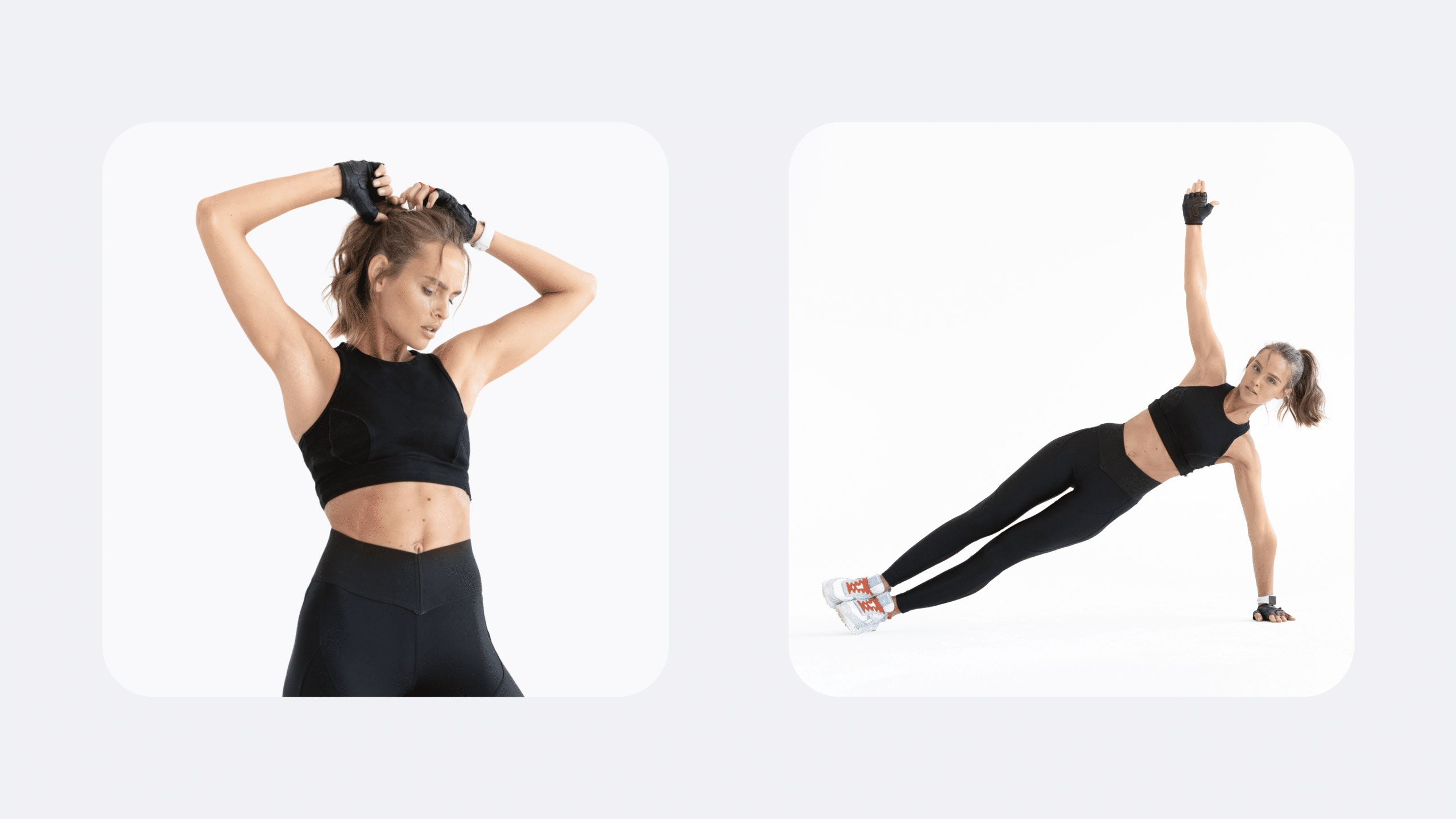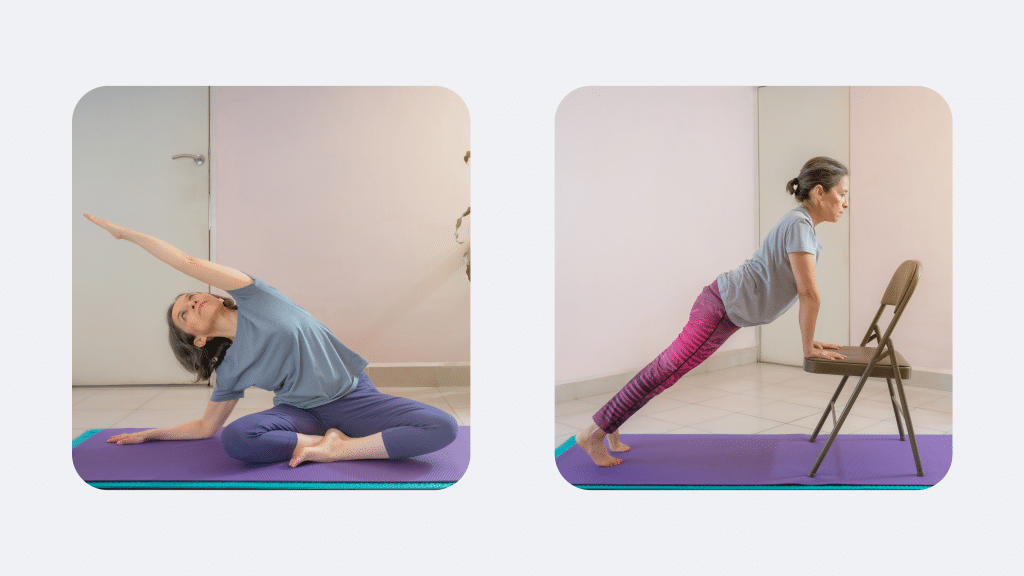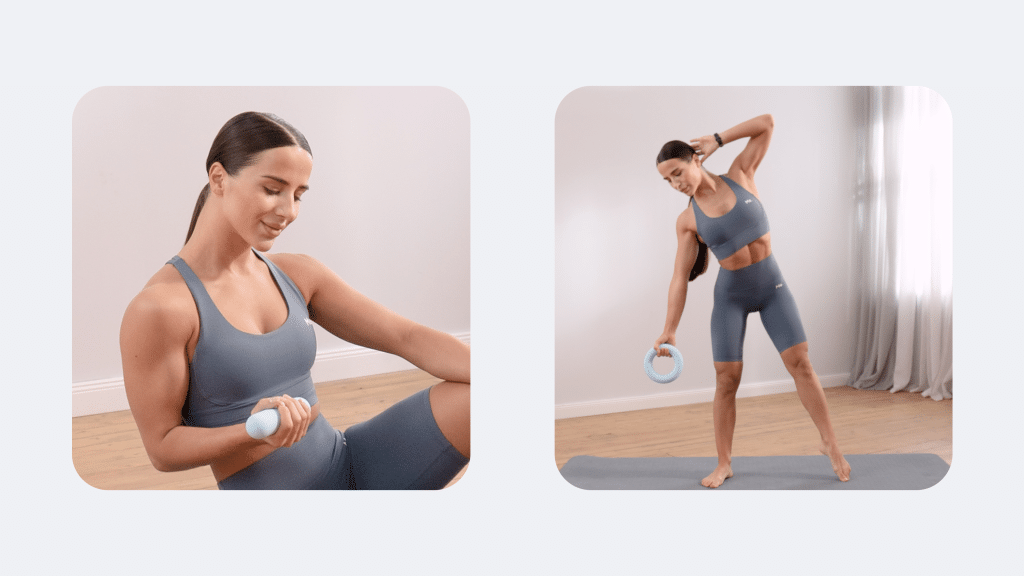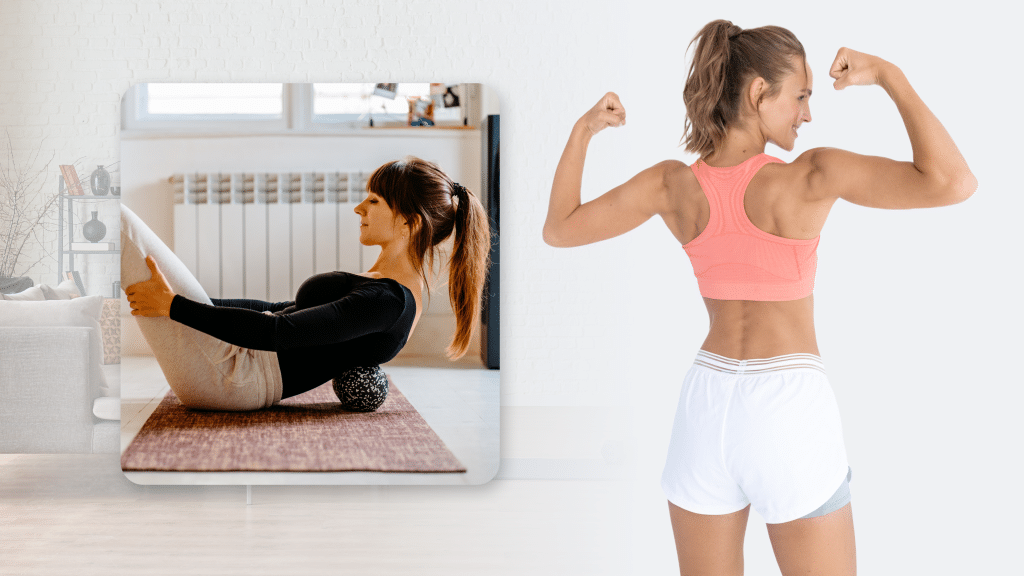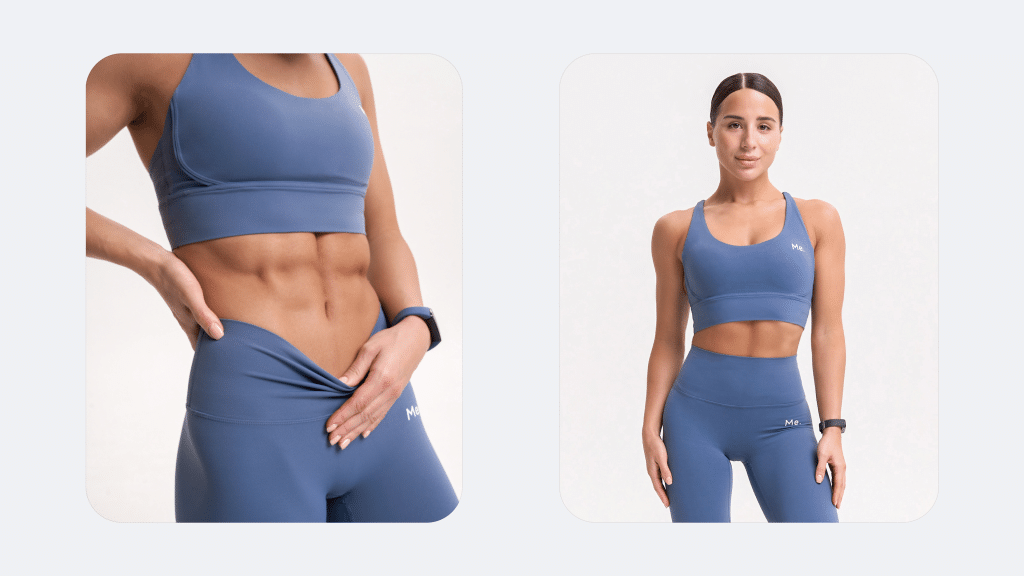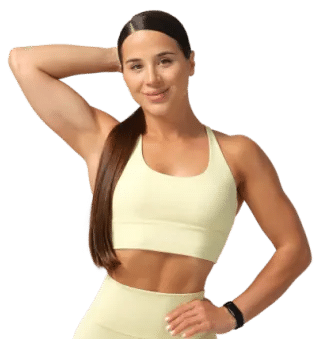A strong, stable core is the foundation of a healthy, fit body. It comprises numerous muscles, including the rectus abdominis (commonly known as the “abs”), the transverse abdominis, and the obliques. Abs get all the glory, but a well-rounded core workout should also include exercises that target the surrounding muscle groups.
One of the most popular go-to exercises for targeting these crucial muscles is the plank (2). And while there’s no denying the effectiveness of planks, relying solely on this single exercise can lead to boredom, repetitive movements, and even discomfort for some due to form-related issues.
Therefore, we’ve compiled a list of 10 exhilarating plank alternatives that will challenge and engage your core and also work the various muscles within this essential muscle group. With clear instructions on how to perform each exercise and an explanation of its effectiveness, you’ll be well on your way to a more diverse, dynamic, and enjoyable core workout routine.
Is Planking Really that Effective?
Yes, planking is effective. It may seem like a simple and easy exercise, but it actually requires a lot of strength and stability to hold the position properly.
The most obvious benefit of planking is its ability to strengthen your core muscles. A strong core helps with posture and balance, supports your spine, and can prevent lower back pain (3). In addition, planks engage multiple muscle groups at once, including the arms, shoulders, chest, glutes, and legs. This means you can work your entire body by just properly holding a plank for a short duration of time.
However, the benefits of planking go beyond just strengthening your core. This exercise also helps improve your overall posture, as it requires you to maintain a neutral spine and engage your abdominal muscles. Planking can also help increase flexibility and stability in the joints, which makes it a great exercise for injury prevention (4).
Unfortunately, not everyone is able to properly hold a plank position due to different physical limitations. For example, if you have elbow, wrist, or shoulder issues, planking may put too much strain on these areas. In this case, it’s important to listen to your body and modify the exercise to suit your needs.
Find more information on what planks do for your body in our Side Plank Muscles Worked blog post.
Who Needs a Substitute for Planks?
Asking “What is a good substitute for planks?” isn’t always about evading the plank — sometimes it’s about adding variety to the routine and completing the exercise with correct form.
There are many benefits to acquire, and the following people stand to gain from finding alternatives to traditional exercise:
1. Beginners
Those who are new to core workouts may find planks challenging or uncomfortable due to their lack of strength or improper form. Plank alternatives can help ease them into core training, gradually building up the necessary strength and stability.
Read More: Does Planking Burn Fat? Unveiling the Truth of the Famous Plank vs. Fat Debate
2. Individuals with Injuries or Physical Limitations
Some people may have conditions, such as wrist or shoulder pain, that prevent them from properly executing a plank. Alternatives can provide a safer way to work the core muscles without exacerbating existing issues.
3. Those Experiencing Boredom or Plateauing
Relying solely on planks can lead to boredom or diminished results over time (1). Incorporating different exercises can reinvigorate your workout routine, keeping it fresh, engaging, and more effective in the long term.
4. Advanced Fitness Enthusiasts
For those who have mastered the plank and are looking for a more challenging workout, plank alternatives can provide a new level of difficulty and progressively challenge these muscle groups in the core. Progressive overload is the key to strength gains and manipulating an exercise is one of the best ways to achieve this overload.
5. Individuals with Specific Goals
Depending on their personal fitness goals, some people may prefer exercises that focus on certain areas of the core or provide additional benefits, such as improved balance or flexibility (4).
Are you interested in a plank challenge? Try our 30-Day Plank Challenge for Beginners.
What to Do Instead of Planks: 10 Alternatives
Here are some plank alternatives that will challenge and engage your core muscles in new and exciting ways:
1. Dead Bug
The Dead Bug is an excellent core exercise that targets the rectus abdominis, transverse abdominis, and obliques. It is particularly well-suited for beginners who want to build core strength without putting additional stress on the lower back. The Dead Bug can be easily incorporated into any core workout routine or performed as a warm-up exercise.
How to perform the exercise:
- Lie flat on your back on a comfortable surface, such as a yoga mat with your arms extended toward the ceiling and your knees bent at a 90-degree angle directly above your hips.
- Engage your core by pressing your lower back into the floor, ensuring there’s no gap between your back and the ground. Breathe out through your stomach to further press your lower back into the ground. This is your starting position.
- Slowly lower your right arm and left leg simultaneously while maintaining the bend in your left knee. Keep your core engaged and your lower back pressed to the floor throughout the movement, inhaling as you lower your limbs.
- Exhale as you raise your right arm and left leg back to the starting position. Repeat the movement with your left arm and right leg. Continue alternating sides for the desired number of repetitions.
2. Russian Twist
The Russian Twist is a dynamic core exercise that primarily targets the obliques, but also engages the rectus abdominis and transversus abdominis.
It’s suitable for individuals with intermediate core strength who want to improve their rotational power and overall stability. The Russian Twist can be incorporated into any core or full-body workout routine. However, with this exercise, make sure that you’re doing it with proper form before you add external weight. These rotational movements can lead to additional stress on the lower back and when done incorrectly can even lead to lower back injuries.
How to perform the exercise:
- Sit on the floor with your knees bent and feet flat on the ground. Hold a weight, such as a medicine ball or dumbbell, with both hands in front of your chest.
- Lean back slightly to engage your core, keeping your back straight and chest lifted. Lift your feet off the ground, crossing your ankles if it’s more comfortable.
- With the weight held close to your chest, rotate your torso to the right, bringing the weight toward your right hip. Ensure your core remains tight and engaged throughout the movement.
- Rotate your torso to the left, bringing the weight toward your left hip. Continue alternating sides for the desired number of repetitions, maintaining proper form and controlled movements.
3. Bird Dog
The Bird Dog is a low-impact core exercise that targets the rectus abdominis, transverse abdominis, and lower back muscles.
It’s ideal for individuals of all fitness levels, particularly those looking to improve balance and coordination. The Bird Dog can be included in any core or full-body workout routine or performed as part of a warm-up or cool-down session.
How to perform the exercise:
- Start on your hands and knees on a comfortable surface, such as a yoga mat, with your hands directly below your shoulders and your knees below your hips.
- Engage your core and maintain a neutral spine. This is your starting position.
- Slowly extend your right arm forward while simultaneously extending your left leg straight back, keeping both parallel to the floor. Keep your core engaged and hips square to the ground during the movement. Hold the extended position for 2-3 seconds.
- Return your right arm and left leg to the starting position and repeat the movement with your left arm and right leg. Continue alternating sides for the desired number of repetitions while maintaining proper form and steady breathing.
4. Reverse Crunch
The Reverse Crunch is a highly effective core exercise that primarily targets the lower rectus abdominis, in addition to the transverse abdominis and obliques.
It’s suitable for individuals with beginner to intermediate core strength who are looking to focus on their lower abs. The Reverse Crunch can be easily integrated into any core workout routine.
How to perform the exercise:
- Lie flat on your back on a comfortable surface, such as a yoga mat, with your arms resting by your sides and palms facing down.
- Bend your knees and lift your legs so that your thighs are perpendicular to the floor and your calves are parallel to the floor. Engage your core to press your lower back into the ground.
- While keeping your core engaged, exhale and lift your hips off the floor by curling your knees toward your chest in a controlled motion.
- Inhale and slowly lower your hips back to the starting position without letting your feet touch the ground. Repeat the movement for the desired number of repetitions while maintaining proper form.
5. Side Plank with Leg Lift
The Side Plank with Leg Lift is a challenging core exercise that targets the obliques, transverse abdominis, glutes, and hip abductors.
This advanced exercise is perfect for those who are looking to increase their core strength, balance, and stability. It can be incorporated into any core-focused or full-body workout routine.
How to perform the exercise:
- Start in a side plank position, with your right forearm on the ground, your elbow below your shoulder, and your left hand on your hip. Stack your left foot on top of your right foot, forming a straight line from head to heels.
- Engage your core and maintain a stable side plank position. This is your starting position.
- Slowly lift your left leg as high as you comfortably can while maintaining proper form and keeping your core engaged.
- Lower your left leg back to the starting position in a controlled manner. Repeat the movement for the desired number of repetitions before switching to the other side.
Read More: 30-Day Wall Sit Challenge: AMAZING Benefits Revealed!
6. Superman
The Superman is an effective, low-impact core exercise that targets the lower back muscles, specifically the erector spinae, in addition to the glutes and hamstrings.
It’s suitable for individuals of all fitness levels, particularly those who are looking to strengthen their lower back and improve posture. The Superman can be included in any core or full-body workout routine, or performed as part of a warm-up or cool-down session.
How to perform the exercise:
- Lie face down on a comfortable surface, such as a yoga mat, with your arms extended overhead and legs straight behind you.
- Engage your core and keep your neck in a neutral position. This is your starting position.
- Simultaneously lift your arms, chest, and legs off the ground as high as comfortably possible, squeezing your glutes and lower-back muscles during the movement.
- Hold the raised position for 2-3 seconds before slowly lowering your arms, chest, and legs back to the starting position. Repeat the movement for the desired number of repetitions while maintaining proper form and steady breathing.
7. Bicycle Crunch
The Bicycle Crunch is an effective core exercise that targets the rectus abdominis, transverse abdominis, and the internal and external obliques.
It’s suitable for individuals with beginner to intermediate core strength who are looking to improve their rotational power and overall core stability. It can easily be incorporated into any core workout routine.
How to perform the exercise:
- Lie flat on your back on a comfortable surface, such as a yoga mat, with your hands placed lightly behind your head and elbows flared out. Lift your knees so they form a 90-degree angle with your hips.
- Engage your core and lift your head, neck, and shoulders off the ground. This is your starting position.
- Bring your right knee toward your chest while simultaneously rotating your torso and bringing your left elbow toward your right knee.
- Switch sides by extending your right leg and bringing your left knee toward your chest, while rotating your torso and bringing your right elbow toward your left knee. Continue alternating sides in a controlled motion for the desired number of repetitions while maintaining proper form.
8. Seated Leg Lifts
Seated Leg Lifts primarily target the lower rectus abdominis, hip flexors, and quadriceps.
This exercise is suitable for individuals with beginner to intermediate core strength and focuses on the lower abs and hip flexors. It can be included in any core or full-body workout routine.
How to perform the exercise:
- Sit on a comfortable surface, such as a yoga mat, with your legs extended in front of you and your hands resting on the floor slightly behind your hips for support.
- Lean back slightly and engage your core, keeping your back straight and chest lifted. This is your starting position.
- Slowly lift your right leg as high as you comfortably can while maintaining proper form and keeping your core engaged.
- Lower your right leg back to the starting position in a controlled manner, then repeat the movement with your left leg. Continue alternating legs for the desired number of repetitions while maintaining proper form and steady breathing.
9. Boat Pose
The Boat Pose is a challenging isometric core exercise that targets the rectus abdominis, transverse abdominis, and hip flexors.
It’s ideal for individuals with intermediate to advanced core strength who aim to improve their balance and stability. It can be incorporated into any core or full-body workout routine, or performed as part of a yoga or Pilates practice.
How to perform the exercise:
- Sit on a comfortable surface, such as a yoga mat, with your knees bent and feet flat on the ground. Place your hands on the backs of your thighs or by your sides for support.
- Lean back slightly, engage your core, and lift your feet off the ground, bringing your shins parallel to the floor. Maintain a straight back and lifted chest throughout the exercise.
- Extend your arms straight out in front of you, parallel to the floor, or keep them on the backs of your thighs for additional support. This is the Boat Pose.
- Hold the pose for the desired amount of time, focusing on maintaining proper form and steady breathing. Release the pose and return to the starting position when finished.
10. Mountain Climbers
Mountain Climbers are a dynamic, full-body exercise that targets the rectus abdominis, transverse abdominis, obliques, and several other muscle groups.
This exercise is perfect for individuals with intermediate to advanced core strength who want to incorporate cardio and core training simultaneously. Mountain Climbers can be included in any core or full-body workout routine, or as part of a high-intensity interval training (HIIT) session.
How to perform the exercise:
- Start in a high plank position with your hands slightly wider than shoulder-width apart and directly below your shoulders, feet hip-width apart, and your body forming a straight line from head to heels.
- Engage your core and maintain a neutral spine. This is your starting position.
- Bring your right knee toward your chest in a controlled motion while maintaining proper form and keeping your core engaged.
- Quickly switch legs by extending your right leg back to the starting position and bringing your left knee toward your chest. Continue alternating legs at a moderate to fast pace for the desired number of repetitions or time duration while maintaining proper form and steady breathing.
FAQs
How can I get abs without planks?
If planking isn’t an option for you, there are still plenty of ways to get strong and defined abs. You should also remember that virtually any weightlift you perform will require you to engage your core to properly perform the exercise. So even if you’re not directly training your core, it will still be very active when weightlifting. Here are a few alternative exercises that can target your core muscles without relying on the plank:
- Crunches: This classic ab exercise targets the rectus abdominis, also known as the “six-pack” muscles. To perform a crunch, lie on your back with your knees bent and feet flat on the ground. Place your hands behind your head or across your chest, then lift your head and shoulders off the ground by engaging your core muscles. Lower back down slowly and repeat.
- Russian Twists: This exercise works your obliques, the muscles on the sides of your waist. Sit on the ground with your knees bent and feet lifted off the ground. Lean back slightly while keeping your back straight and chest open. From here, twist your torso from side to side, touching the ground on each side.
- Plank Variations: If you can’t hold a traditional plank position, there are many variations that may work better for you. For example, instead of placing weight on your hands, you can use forearm planks or even try a dynamic variation such as Mountain Climbers where you bring one knee toward your chest at a time.
- Carry Variations: If being on your elbows for an extended period of time causes you pain, you can opt for a carry. A popular carry exercise would be a Farmer’s Carry. This will have you standing up straight, core engaged, and then holding a weight in your hand at the side of your body. Make sure to keep your head and chest up, then slowly walk forward for 10-20 yards. Focus on squeezing your core and trying to balance your body so that you’re standing upright. The weight will want to pull your body down to the side, but by engaging your core and keeping your chest upright, you can counter that external load.
What is a one-minute plank equivalent to?
It’s difficult to determine an exact equivalent to a one-minute plank for many reasons. The level of exertion and muscle groups targeted can vary greatly depending on the individual’s form, strength, and endurance. However, it’s safe to say that holding a plank for one minute could be just as great as doing multiple repetitions of other core exercises.
Rather than focusing on an exact equivalent, it’s important to focus on your own progress and improvement over time. Keep challenging yourself by increasing the duration or trying different plank variations to continue seeing results.
Who shouldn’t do planks?
People with any existing injuries or medical conditions that may be aggravated by planking shouldn’t perform this exercise without first consulting a doctor or physical therapist.
In addition, those who are pregnant or have recently given birth may need to modify the exercise to accommodate their changing bodies and avoid any strain on their core muscles. It’s important for everyone, regardless of fitness level or ability, to listen to their bodies and make modifications as needed when it comes to exercising.
Planks can be effective and beneficial for many people, but they’re not the only way to strengthen your core muscles. Make sure to consult a professional if you have any concerns or limitations before you incorporate planks into your workout routine.
What is the longest you should hold a plank?
You should hold a plank for as long as you can maintain proper form and engage your core muscles. This will vary from person to person, but a general guideline is to aim for 30-60 seconds before taking a break. You can then repeat the plank for multiple sets with short breaks in between.
It’s important not to push yourself too hard or hold the plank for an excessive amount of time, as this can lead to strain or injury. Instead, focus on gradually increasing your endurance and strength over time through consistent practice. Remember to always listen to your body and modify or stop if you experience any discomfort or pain. Proper form is the most important aspect of a plank, so focus on doing it right rather than making it to a specific time.
The Bottom Line
While planks are a highly effective core exercise, incorporating a variety of plank alternatives into your workout routine can help target different muscle groups, increase overall core strength, and keep your workouts engaging and enjoyable.
By trying out these 10 plank alternatives, you can cater to your individual needs, preferences, and fitness levels, ensuring a more diverse and dynamic approach to core training. Remember to maintain proper form, focus on steady breathing, and always listen to your body when incorporating new exercises into your fitness regimen.
DISCLAIMER:
This article is intended for general informational purposes only and does not serve to address individual circumstances. It is not a substitute for professional advice or help and should not be relied on for making any kind of decision-making. Any action taken as a direct or indirect result of the information in this article is entirely at your own risk and is your sole responsibility.
BetterMe, its content staff, and its medical advisors accept no responsibility for inaccuracies, errors, misstatements, inconsistencies, or omissions and specifically disclaim any liability, loss or risk, personal, professional or otherwise, which may be incurred as a consequence, directly or indirectly, of the use and/or application of any content.
You should always seek the advice of your physician or other qualified health provider with any questions you may have regarding a medical condition or your specific situation. Never disregard professional medical advice or delay seeking it because of BetterMe content. If you suspect or think you may have a medical emergency, call your doctor.
SOURCES:
- A Subject-Tailored Variability-Based Platform for Overcoming the Plateau Effect in Sports Training: A Narrative Review (2022,nih.gov)
- Effects of High Intensity Plank Exercise on Physical Fitness and Immunocyte Function in a Middle-Aged Man: A Case Report (2021,nih.gov)
- The real-world benefits of strengthening your core (2012,harvard.edu)
- Why You Should Start Doing Planks (2021,clevelandclinic.org)
